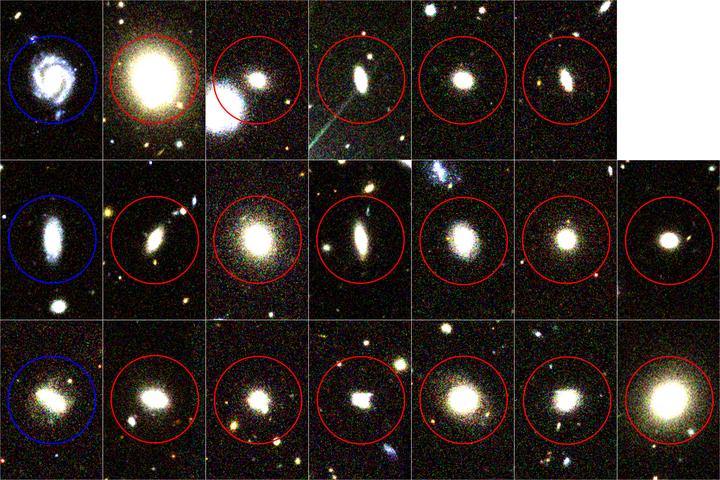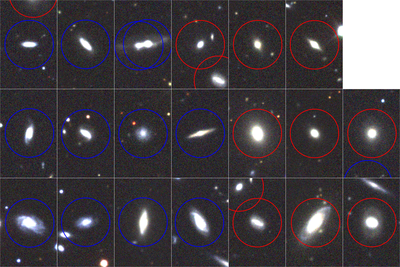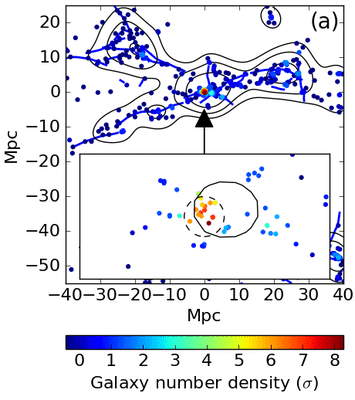 Fig. 1: Member galaxies in a typical galaxy cluster in the local Universe. Red galaxies are dominant. Blue and red galaxies are marked by blue and red circles, respectively.
Fig. 1: Member galaxies in a typical galaxy cluster in the local Universe. Red galaxies are dominant. Blue and red galaxies are marked by blue and red circles, respectively.
Galaxies evolve from a blue star-forming phase into a red quiescent one by quenching their star formation activity. In high density environments, this galaxy evolution proceeds earlier and more efficiently. Therefore, local galaxy clusters are dominated by well-evolved red, elliptical galaxies (Fig. 1). In the local Universe, observed blue fractions of massive clusters, number fractions of blue galaxies in clusters , are as small as ~ 0.2.
Here I report a discovery of a “blue cluster” (Fig. 2), that is a local galaxy cluster with an unprecedentedly high fraction of blue star-forming galaxies yet hosted by a massive dark matter halo (2 x 10^14 Msun).

The blue fraction is 0.57, which is 4.0 sigma higher than those of the other comparison clusters under the same selection and identification criteria. The blue fraction of the cluster is more than 4.7 sigma beyond the standard theoretical predictions including semi-analytic models of galaxy formation. The probability to find such a high blue fraction in an individual cluster is only 0.003%.
The spatial distribution of galaxies around the blue cluster (Fig. 3) suggests that filamentary cold gas streams can exist in massive halos even in the local Universe. However these cold streams have already disappeared in the theoretically simulated local universes. The existence of the blue cluster challenges the current standard frameworks of the galaxy formation and evolution in the Lambda CDM Universe.

This project is based on the following publication.
Tetsuya Hashimoto, Tomotsugu Goto, Rieko Momose, Chien-Chang Ho, Ryu Makiya, Chia-Ying Chiang, and Seong Jin Kim, 'A young galaxy cluster in the old Universe' , Monthly Notices of the Royal Astronomical Society, (2019).